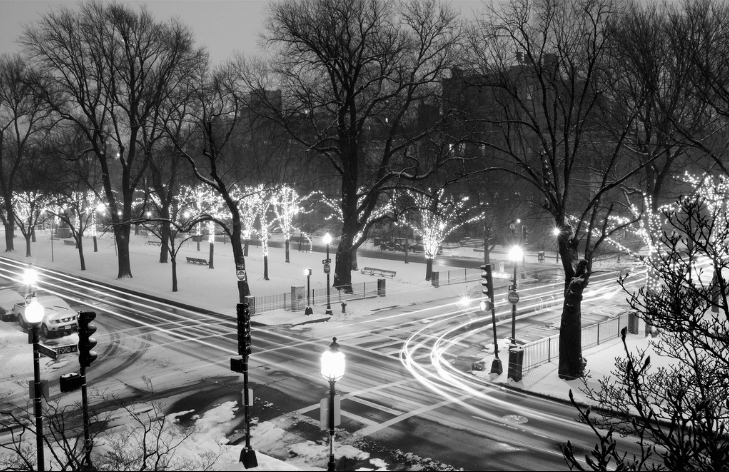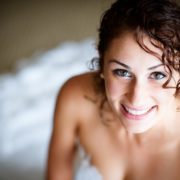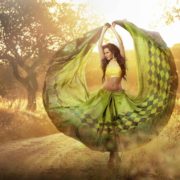For Boston based photographer Matthew Ireland, the journey in photography has been full of colors. He began his career in photography after he started shooting jazz and hip hop shows. His contribution to a Boston focused blog further ignited his interest in photography. He currently pursues a range of genres like nature, landscape, wildlife and architectural photography. He is also an active contributor of Getty Images.
View his portfolio at Mattewiphoto.com.

Matthew Ireland Photography
1. When did you first know that you wanted to be a photographer?
I loved taking photographs as a kid with an old Kodak Instamatic, and later with a Polaroid 600, although I never took any photography classes in high school or college. I began getting serious about photography less than 10 years ago. I started by shooting jazz, hip hop, and rock shows with a good point and shoot digital camera in order to illustrate concert reviews I contributed to a Boston-focused blog (long since gone). Although that started as a utilitarian pursuit, I began yearning to take photos at every opportunity and found myself looking at the world around me as if through a lens, constantly thinking of framing and composition. I then got a DSLR and began studying photography books, viewing online instructional videos/courses, and taking lots of photos. I’m still learning and attempting to grow and develop as a photographer.
2. How do you conceptualize your photographs?
When I first became serious about photography, I started to see everyday scenes and urban spaces I was very familiar with in a new way. I found myself constantly framing scenes and imagining compositions, even when I had no camera with me (at that point, cell phone cameras were not yet a viable tool for capturing decent photos). I still see the world that way and it’s one of the things I treasure from developing an interest in photography. I appreciate and do not take for granted the beauty or interesting qualities presented by nearly every setting, every space. I’ve also learned to see things that I would likely have never noticed in the past, such as small architectural details in otherwise unremarkable buildings, or line patterns created by a block of warehouses and late afternoon, long-cast shadows. If I have my camera (or iPhone) I try to capture these types of things even when I’m not out for the purpose of shooting photos. On the other hand, if I set out to photograph a particular landscape or scene, I will have either “scouted” the setting or otherwise decided on angles and compositions in advance of the shoot. But I try not to be locked into preconceived compositions and remain open to seeing the setting in a new way.
Also checkout: 5 beautiful birds common to Hanoi

Matthew Ireland Photography
3. What websites/books/magazines/blogs do you read/look at for ideas/guidance?
I love Flickr and have always found inspiration from the photographers I follow there, from casual hobbyists to serious amateurs and professionals. Same for the photographers I follow on twitter. I regularly check PetaPixel, Photography Bay, The Photo Argus, and 43 rumors (I have an Olympus m 4/3 in addition to a Nikon DSLR), and other sites. Early on, Digital Photography School was a great source for instruction that helped me develop my skills. I still check dPS regularly.
4. You are an environmental attorney and do some endangered species work. Has this influenced your photography?
In a word, yes. I love wildlife and nature photography and seek out opportunities to shoot in outdoor locations that offer the chance to spot and photograph birds and marine wildlife in particular. I don’t (yet) have the equipment to be a serious wildlife photographer, however. I only have a consumer-level 300 mm that is not fast (f/4–5.6) and has a somewhat sluggish auto-focus. Even though I don’t always come back with fantastic shots, wildlife outings are fun and rewarding, and I often learn to identify particular species of birds or vegetation. Plus, I have several unique landscape shots featuring people or old or abandoned buildings that have unexpectedly resulted from nature or wildlife photo outings. It’s important to learn to see what presents itself, even if it’s not what you are looking for.

Matthew Ireland Photography
5. What is the biggest challenge you’ve faced as a photographer?
Shooting in small clubs with very low light to illustrate concert reviews was often difficult.
But the singular challenge that comes to mind was shooting jellyfish without a tripod in a dark exhibit space at the New England Aquarium. The jellyfish were in cylindrical tank, which was also dark with only a beam of light illuminating the display from below. It made for a very dramatic effect that I knew could make a great photograph. But the aquarium was crowded and I had precious little time to wait for the jellyfish to cluster around the beam of light for a pleasing composition. Despite the challenges, I love the way it turned out. The colors, framing and sense of motion are dramatic and it’s surprisingly sharp for a 0.6 second hand held exposure. I like the photo so much, I designed the home page of my Pixpa site around the shot and use it as a logo of sorts for my photography blog. I also have a large framed print of it in my kitchen (it works well there!)
Related: Kitchen Remodeling Ideas
6. What do you consider your most valuable piece of equipment?
A few years ago I probably would have said my tripod because I’ve always been drawn to wildlife, long exposure, and macro photography. But now I have to say my iPhone, because, as they say, “the best camera is the one you have with you.” So often, great images present themselves when you are not thinking about taking photos. I almost didn’t stop to take this iPhone shot because I was in a rush to get somewhere. I forgot that I’d even taken it until I happened across it a few weeks later. But it’s one a several iPhone shots I’ve posted to my Pixpa site. Same for this shot which just begged to be captured, even though I was with friends heading to dinner and had to steal away for a moment to take this photo.
Also check out: Pete’s Bird Blog by Pete

Matthew Ireland Photography
7. What is the appropriate size for a portfolio? How much does it vary depending on purpose? What are the benefits of a print portfolio vs. a digital one?
I only have a digital portfolio and do not solicit photography jobs (I don’t offer portrait, wedding or any other photography services). So my online portfolio is more geared towards selling prints and expressing who I am as a photographer. That said, I think a portfolio should be large enough to fairly represent the range of subjects and types of photography one practices, but not overwhelming in size. Even if someone is seriously interested in your work, will they really look through more than 25 photos? Maybe, but putting your best foot forward with the first 15-20 photos in a digital portfolio is probably a good idea. I have 25 shots rotating in a slideshow on the homepage of my Pixpa site, which I consider my primary digital portfolio.
8. Lastly, tell us why you love Pixpa?
I spent a great deal of time researching options ranging from professional site developers to simple WordPress templates. Pixpa stood out as a very user-friendly platform with a good range of style options, all of which looked extremely professional, but clean and easy to navigate. Best of all, it was easy to customize any option to create a uniquely personal site. And I really appreciated the fact that I could try out and save different style formats. I still have that option should I decide to go for a fresh look in the future.
If you would also like to learn about nature photography, then must check out Photo Image Planet article on How to improve your nature photography skills.


